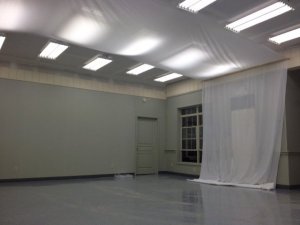- Apr 7, 2009
- 4,629
- 2,118
- Awards
- 10
- First Name
- Joe
shot of the rigging from over head
View attachment 792
3 booths under construction, learning as I go. Just another cluster in Uncle Joe's hat rack* world...
*JQ, I love that quote of yours, did I get that quote right??
Please drop me a comment here on my VDP mod. Looking to connect video walkaround to pics and options list.
Audi A4 (still working on walk around video process) CLICK HERE
Joe have you figured out what your going to do about the hot spots? I love your design...
Great video, but Katie references the Audi as 2.0 turbo in the beginning and then called it supercharged at :30 mark..
If they're talking about stops in the photographic sense (and I can't think of another valid way, especially since we're talking thirds), they're talking about how much light is absorbed by the diffuser and not passed through. 1/3 should allow the most light through, which is a good thing if your bay is like ours and not that brightly-lit, but your photographer (or the voices in the camera's head if you shoot auto) would have to compensate by opening the camera's aperture 1/3 stop, slowing down the shutter speed 1/3 stop, or bumping up the ISO 1/3 stop. (Unless we're shooting something that lights up like a radio or odometer, we prioritize shutter speed first because camera shake is ugly and aperture second since it dictates depth of field. ISO stays virtually locked at 400 in regular service, which gets the image sensor as light-sensitive as we can stand before the image gets too noisy.)Blake,
Photo forums reccomend white ripstop nylon found at Joanna fabrics. I bought it and it works... but it comes in 5foot width only. Stefan sent me a source too, but it's in 5foot wide only. I am concerned about the "stripes" of the seams from over head.
I just sourced a company out of Germany that makes a 17foot wide photo disfuser fabric avail in 1/3, 2/3 or 3/3 stops. I am working out the technical crap, they tell me that a 3/3 is a 50% reduction in light. I am thinking a 2/3 and moveing the fabricc away from the lights, but, this will shrink the room.
more as it comes...



